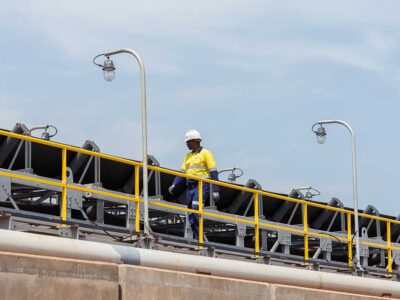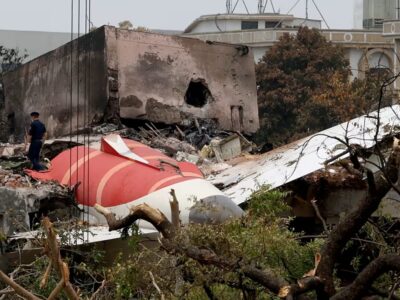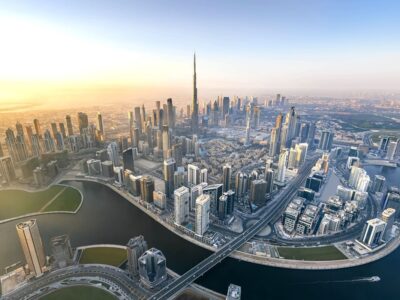On the afternoon of 5 October 1932, a lumbering biplane emerged out of the haze above Sharjah. Circling around a small strip–known as Al Mahatta, or ‘the Station’ – the Handley Page aircraft eventually landed, coming to a stop just outside a tiny complex of offices and housing.
The occasion was marked by Sheikh Sultan bin Saqr Al Qassimi, then Ruler of Sharjah, who came out to greet the aircraft and its four passengers, who were on their way to India. It was an inauspicious beginning for what was to become the UAE’s aviation industry. That one flight a week, operated by Imperial Airways – the forerunner of British Airways – was the emirate’s only air transport link with the rest of the world.
Nowadays, of course, the skies above the UAE are amongst the most crowded on the planet. Although the Gulf state is similar in size to the US state of Maine, it now plays host to a total of seven international airports, all of which have contributed heavily to the growth of an economy that was worth $3bn in 1972 but stood at an impressive $230bn in 2009. According to a report by Oxford Economics, the sector already contributes 28 percent of Dubai’s GDP and supports 22 percent of the emirate’s jobs, either directly or indirectly.
But even back in the 1930s, the minor economic boom that occurred in Sharjah as a result of the Imperial Airways link was evident. In 1937, Dubai signed its own agreement with the same airline to lease a flying boat base. And at the beginning of World War Two, the British constructed a threestorey control tower at the site. In the 1960s, Al Mahatta’s runway was paved and a new terminal was added.
By that time, the seeds of the UAE’s future aviation industry were beginning to germinate in the minds of the country’s rulers. In 1959, the then Ruler of Dubai, Sheikh Rashid bin Saeed Al Maktoum, ordered the construction of the country’s first purpose-built facility, which was completed the next year.
The first incarnation of Dubai International Airport featured a runway built from compacted sand, plus an apron and a small terminal. But as the aircraft servicing the facility grew in size, problems with the sand being blown away meant that construction of a tarmac runway became necessary. Over in the neighbouring Sharjah, Al Mahatta was eclipsed in the late 1970s after the opening of the current Sharjah International Airport.
But Dubai’s strategic location only really came into its own in the 1980s. As the major international carriers increased their capacities between Asia and the West, Dubai – alongside other Gulf airports like Bahrain – was regarded as an ideal refueling point. Although more modern aircraft developed since the 1990s have made the need to refuel in the Gulf redundant, the region’s rulers understood that their geographical location provided a stellar opportunity to introduce their own services.
As a result, the four countries – the UAE, Oman, Qatar and Bahrain – that initially had an interest in Gulf Air, originally assisted by the British Overseas Aircraft Corporation (BOAC), decided to go their separate ways. In the UAE, the decision resulted in the birth of Emirates, which was founded in 1985 with start-up capital of $10m provided by the Dubai royal family.
Emirates became profitable within nine months, carrying about 260,000 passengers in its first year of operation. Despite the competition from Gulf Air, which had a strong existing regional network, Emirates quickly saw double-digit growth, pushing out to include destinations in Europe and the Far East within five years. Nowadays, the airline is the world’s biggest in terms of international passenger kilometres flown, and has a fleet of 155 aircraft, with 232 wide-bodies on order.
Article continues on next page…
Following on from Emirates’ success, Abu Dhabi launched its own airline, Etihad Airways, in 2003. Fast growth has seen the carrier win a series of awards for its high quality service, and 2011 is set to be the year Etihad breaks even for the first time. Not content with housing two fast-growing full-service airlines, the UAE is also home to Air Arabia and FlyDubai – two low-cost carriers – as well as RAK Airways, which is based at Ras Al Khaimah International Airport. The country also has international airports in Al Ain and Fujairah.
Right now, the future of aviation in the UAE looks secure as a continuing contributor to economic growth. Earlier this year, Dubai revealed a $7.8bn expansion plan for its current facility. In addition to Concourse 3, which will be completed next year, the airport is also adding Concourse 4 and an expansion to Terminal 2 (which will be completed by 2013).
In total, 675,000 sq m of floor space will be added to the airport, which equates to twice the size of Heathrow’s latest facility, Terminal 5. Outside the passenger areas, a new taxiway will be built, alongside a 60 percent increase in the number of aircraft stands. The plans also include a new dedicated baggage facility.
Meanwhile, over in Abu Dhabi work on the long-delayed Midfield Terminal is expected to start in the second quarter of next year. The $6bn hub is set to open in 2017, and will be Etihad Airways’ new base and the gateway to the UAE capital.
As other major construction projects have been put back as a result of the global economic downtown, the fact that Abu Dhabi is still pushing ahead with its airport expansion gives a great indication as to the importance of the industry to the country.
But Abu Dhabi is not just building out its airport infrastructure. The emirate also sees aerospace in general as a vital cog in its push to develop its own knowledge economy. Through the auspices of Mubadala Aerospace, a unit of one of Abu Dhabi’s biggest investment vehicles, several subsidiaries have been set up to tap a fast-growing market.
A key facet of Mubadala’s aerospace programme is Strata, a company that builds aerostructures — that’s aircraft parts to you and me — in its new plant in Al Ain. Despite the fact that the 21,600 sq m plant only swung into full operation last year, the firm already has well over a billion dollars of business lined up. Its first product, flap track fairings (streamlined pods that protect flap-operating mechanisms on the underside of commercial jet wings) for Airbus aircraft, began to be shipped out of the Al Ain facility in the last quarter of 2010.
But that package is just the start. Strata will also build ailerons (hinged control surfaces on the wings that allow an aircraft to turn) for Airbus A330 and A340 aircraft. In addition, the firm will also build flap track fairings for Airbus’s A380 ‘superjumbo’ aircraft, as well as constructing the entire empennage for Italian outfit Alenia Aeronautica’s fleet of ATR short-haul airliners.
Article continues on next page…
The company’s growth also blends in with Mubadala’s stated ambition to build a homegrown aircraft from scratch within the next decade or so. As yet, the jury is still out on what that type of aircraft will be. Conventional wisdom would state that it would be safest to start with an executive-jet-type, rather than an intercontinental airliner, but whatever the product, Strata will have a close hand in its manufacture.
Meanwhile, another Strata subsidiary, Advanced Military Maintenance Repair and Overhaul Company (AMMROC) has already signed up Western manufacturing giants Lockheed Martin and Sikorsky, and is aiming to complete its aircraft maintenance plant in Al Ain at some point in 2013. After that, officials at the firm say, it intends to export its know-how elsewhere.
“In fairness we are going to focus on the UAE, and then, of course, we are going to the region,” CEO Fahed Al Shamesi told Arabian Business earlier this year. “We understand exactly what’s going on around us, but as I said, we need to focus on the UAE. It will then be easier for us to go to the region and try to market ourselves, because we have the right partners, we have the right capabilities and we have the right tools to go out and try to get some other business from the region.”
But perhaps the crowning feature of the UAE’s aviation future is Al Maktoum International Airport, the centrepiece of the $33bn Dubai World Central project.
The first flights at the facility landed last year, and over the next decade, Al Maktoum will see incremental growth until it finally becomes Emirates Airline’s new home. Although it is not yet clear exactly when the airport will be finished, Dubai is hoping that the facility will become the world’s largest by around 2025, with as many as 120m passengers making their way through its corridors every year.
Al Maktoum International is set to have five parallel runways, plus three passenger terminals, and is believed to be one of the most ambitious airport projects ever attempted. Linked to the airport itself is a major logistics hub, linked by a bonded corridor to Jebel Ali, one of the world’s busiest ports, as well as commercial and residential districts. The entire Dubai World Central complex has been described as the world’s first ‘aerotropolis’.
This month, the UAE will see around 60,000 aircraft movements pass through its skies – a far cry from the four monthly Handley Page flights back in 1932. And as the country’s airport infrastructure and airlines keep expanding, that number is likely to increase exponentially during the next 40 years.







